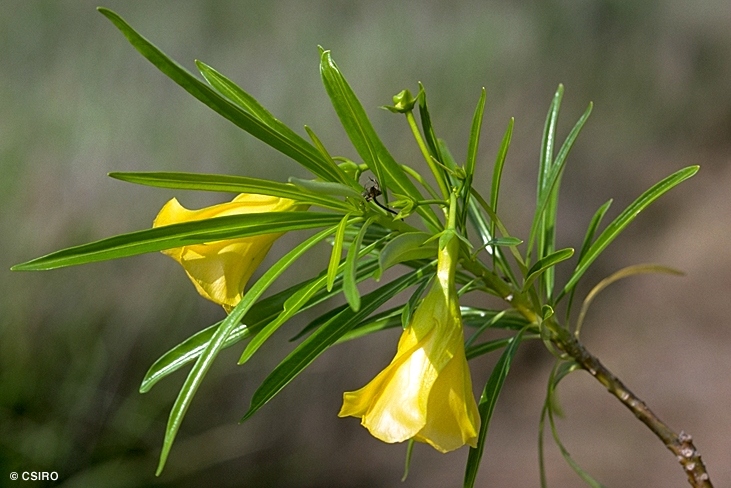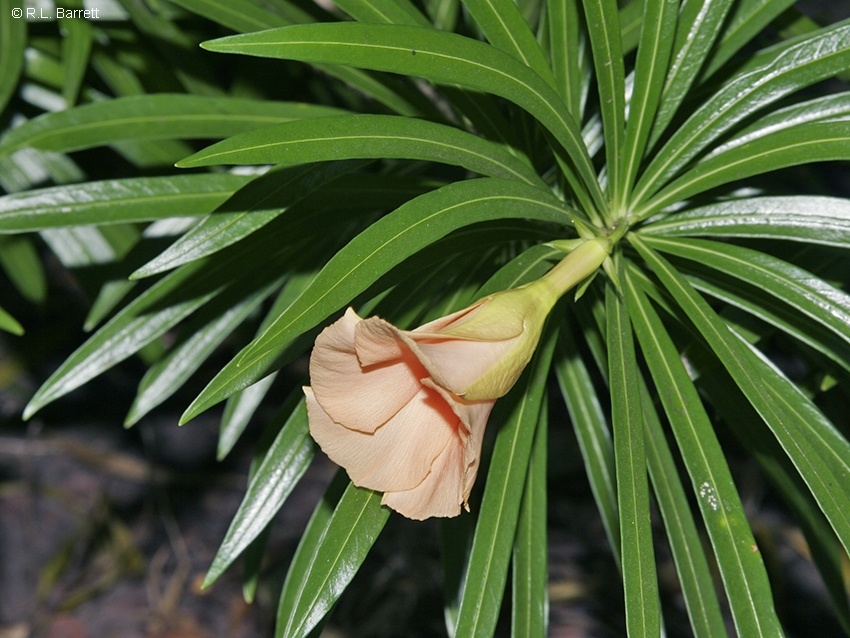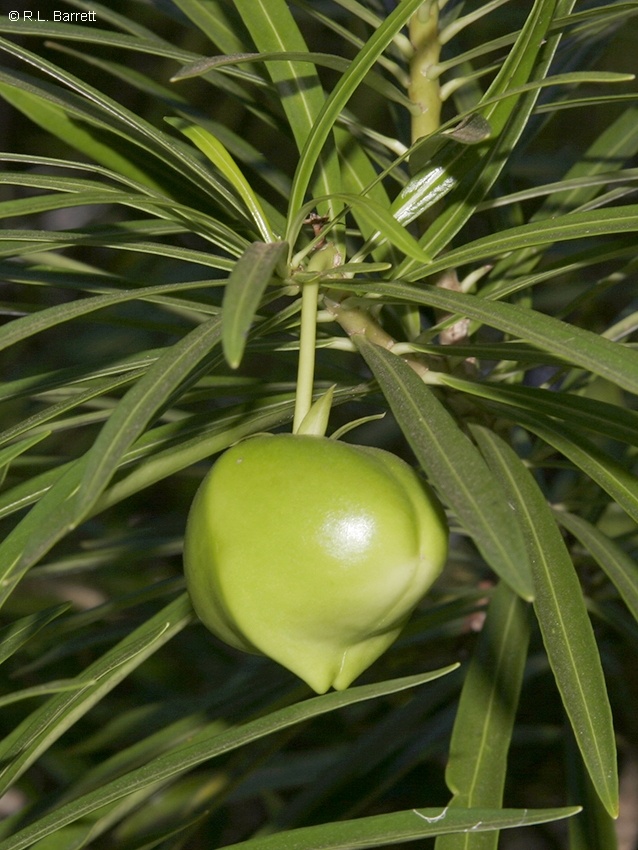Australian Tropical Rainforest Plants - Online edition
Cascabela thevetia (L.) Lippold




Lippold, H. (1980) Feddes Repert. 91: 52.
Currant-tree; Oleander, Yellow; Yellow Oleander
Usually flowers and fruits as a shrub about 2-3 m tall.
Flowers quite large up to 5-6 cm diam., pedicels about 3 cm long. Corolla mainly yellow or orange, tube green. Corolla tube about 3.5-4 cm long, corolla lobes about 3 cm long. Anthers sessile, attached to the corolla. Anthers difficult to observe, the upper surface hidden by a hood of matted hairs attached to the corolla above the anthers. The lower surface obscured by five glands and a mass of hairs attached to the corolla. Ovary surrounded by a fleshy orange disk. Ovules 2 in each locule. Style about 13-15 mm long. Stigma shaped like an umbrella, bifid at the apex but with ten pendent lobes.
Fruits compressed pyriform, about 20-40 x 30-50 x 24-40 mm, wider than long and somewhat bilobed. Calyx persistent at the base. Seeds usually two, enclosed in each of the two boney endocarps which are about 20-25 x 30-35 mm, i.e. wider than long. Seeds about 12 x 14 mm, wider than long. Endosperm scanty. Radicle about 2 mm long.
Features not available.
An introduced species originally from tropical America now naturalised in WA, NT, CYP, NEQ, CEQ and southwards to south-eastern Queensland. Altitudinal range in northern Australia from near sea level to 800 m. Usually grows around habitation but also found on the margins of monsoon forest and rain forest. Also naturalised in Asia, Malesia and the Pacific islands. NB All parts of this plant are poisonous. Everist (1974).
All parts of this plant are poisonous but most cases of poisoning have followed the consumption of the seeds. Poultry, pigs, lambs, cattle and people have been adversely affected. One seed is sufficient to kill a small child. (Everist 1974).
There is some evidence that this plant may cause dermatitis in people.
Commonly cultivated in gardens where plants must survive hot dry conditions.





